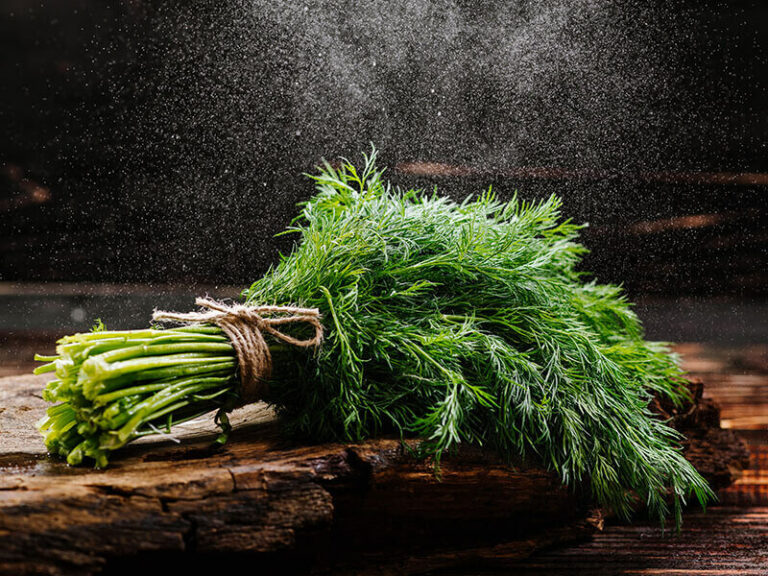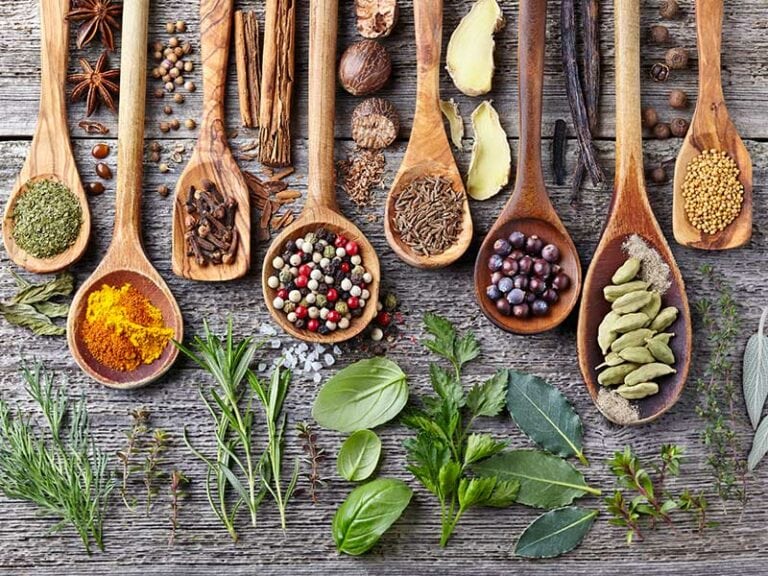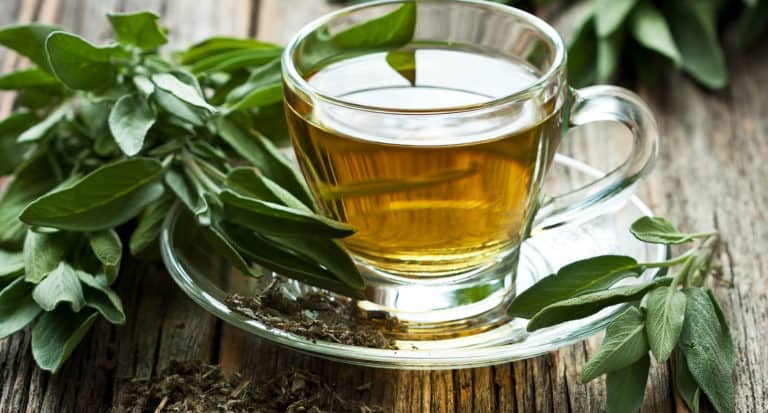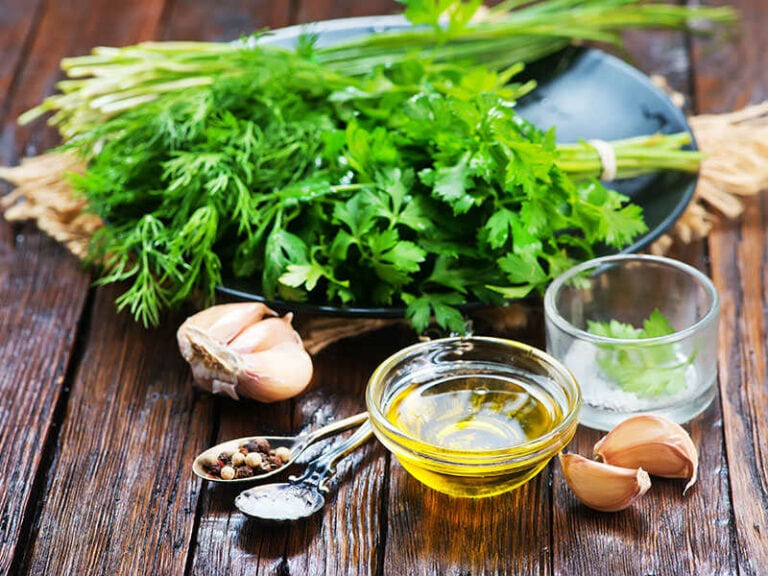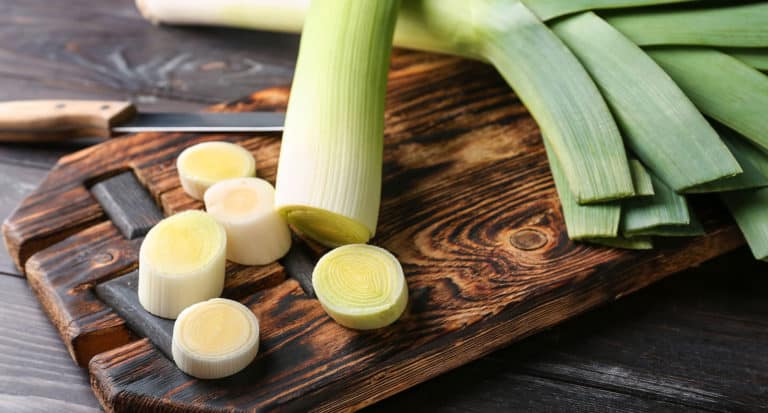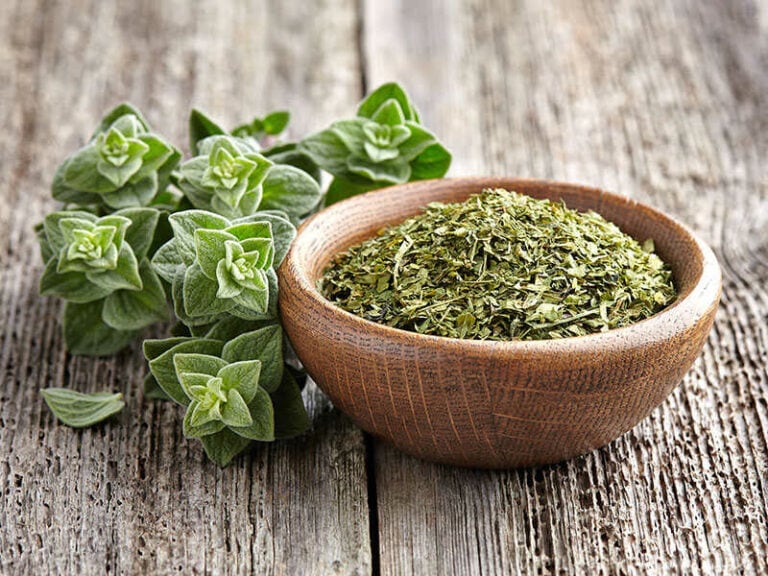Fresh vs. Dried herbs – How many differences can you tell between them? A little hint, there is quite a lot! For that, I have all covered them below. Check it out to see if you can find them all!
Despite the differences, fresh and dried herbs still have a connection. Do you know that sometimes you can swap between them even if the recipe only calls for a certain type? Furthermore, you can make your own dried herbs at home.
All you need is a little guidance, which is right below this post. Take a look, and you are one step closer to being your family’s Masterchef!
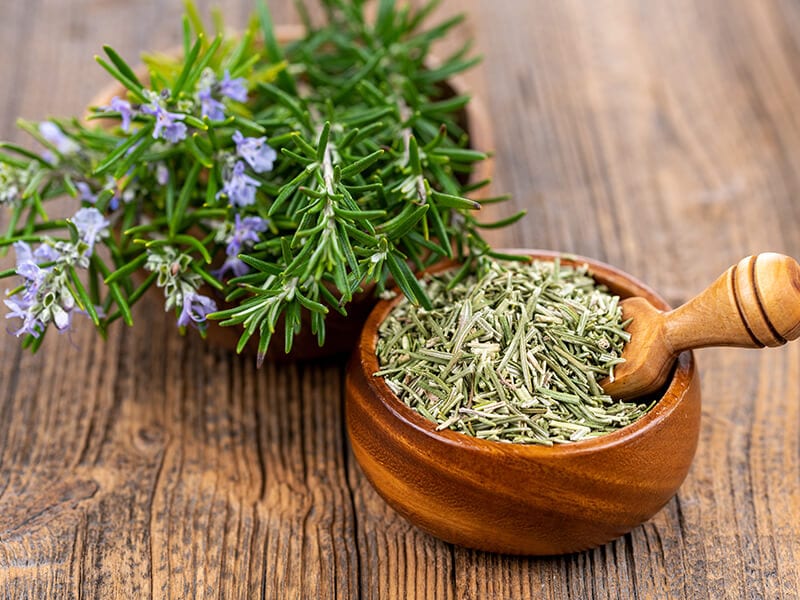
What Are Fresh Herbs?
Fresh herbs are leafy plants that can create flavors and aromas that help take many of your favorite dishes to the next level in a healthy way. They are packed with rich nutrients, antioxidants, and essential oils. (1)
Although many grocery stores sell fresh herbs, most are so easy to grow that you can quickly grow your own fresh herbs at home.
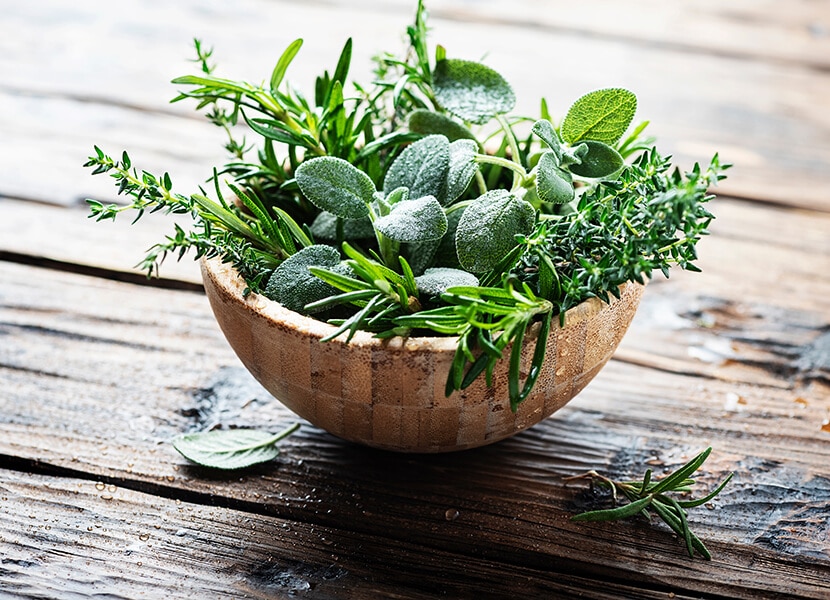
What Are Dried Herbs?
Dried herbs are fresh herbs that have undergone deliberate drying processes to become stable herbs that preserve the flavor for much longer and are easier to store. Typically, dried herbs appear during the winter season to replace unavailable fresh herbs.
By drying the herbs, the aroma and flavor become significantly elevated to produce a stronger profile than the fresh variety. Nowadays, it’s easy to find dried herbs at grocery stores and supermarkets.
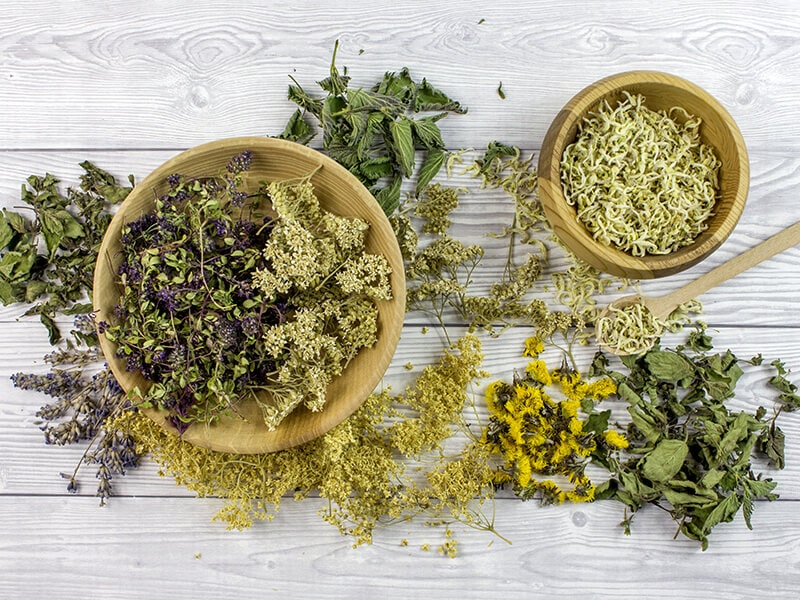
Fresh Herbs And Dried Herbs – A Full Comparison
With their popularity today, you probably know that fresh or dried herbs are ideal ingredients to bring flavor to dishes, even without adding salt, fat, or sugar.
However, you need to understand the unique characteristics of each form of herb to make the most of them and find the best choice for your culinary creations.
Look at this comparison table to distinguish fresh and dried herbs.
Nutrients And Moisture
Nutrients and moisture in herbs are significantly affected during dehydration. The drying process reduces fresh herbs’ natural nutrients, such as essential vitamins. Plus, other substances drop during drying.
- Beta Carotene – A crucial element in fresh herbs, used to produce vitamin A.
- Iron – An essential mineral for the correct function of the human blood oxygenation system.
- Water: dried herbs lose about 80% of their water contents compared to fresh ones. Commonly, dried herbs only retain under 10% moisture content.
- Essential oils also decrease in different proportions or even disappear completely depending on the herb and drying system. Furthermore, these oil varieties tend to lie deep inside the herbs after drying.
Flavor
Dried herbs have stronger flavors than fresh herbs (unless they have stayed for more than a year). Particularly, they can be more pungent or slightly bitter.
This is because herbs in the drying process are exposed to high heat and often crushed, which helps to concentrate their flavor. Fresh herbs have a higher water content, so they are not as potent.
However, dried herbs usually lose a lot of oil or may lie deep inside the leaves. Typically, people rub the dried leaves together to release the flavor when added to the dish.
So, the taste of fresh herbs is not as strong as dried herbs but is more complex and nuanced. Such a clear taste helps add distinctive aroma and flavor to your favorite dishes.
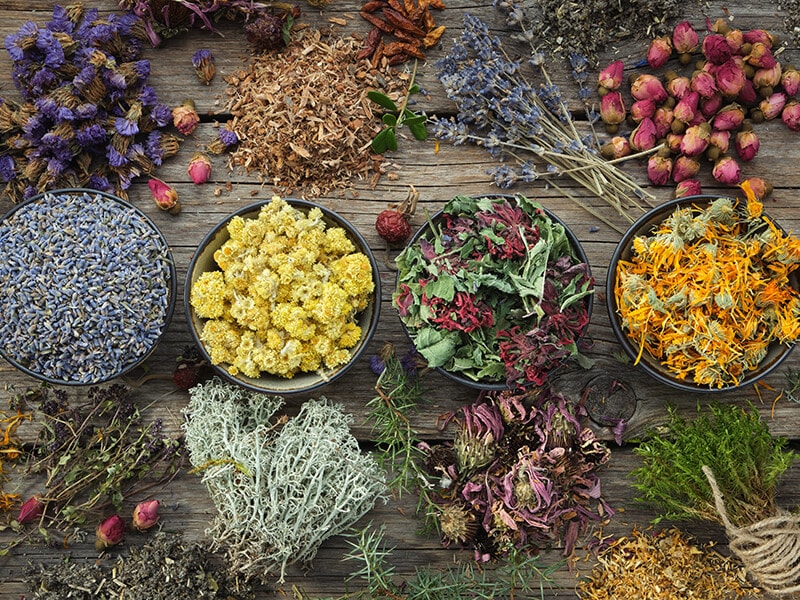
Common Substitution Ratio
Although many recipes use a certain form of fresh herbs, they are sometimes not readily available. The dried variety is ideal for getting the same effect as fresh herbs.
In such cases, swapping between fresh and dried herbs is a handy solution. However, you will need to vary the amount between the two herbs for the best flavor.
Commonly, the conversion rate between fresh and dried herbs is 3:1. To put it simply, use three times the number of fresh herbs compared to that of dried herbs. Since dried herbs have a more concentrated flavor than fresh herbs, less is needed when cooking.
Remember, this is just a general guide, and you can flexibly adjust according to your taste as long as you know that dried herbs are more potent than fresh herbs.
Plus, when it comes to seasoning, it is always easier to add more than to remove, so take things slow. Start with double the amount and work up gradually.
Shelf Life
Fresh herbs last much shorter than dried herbs. People may find the dried version more convenient because of its long shelf life.
Fresh Herbs
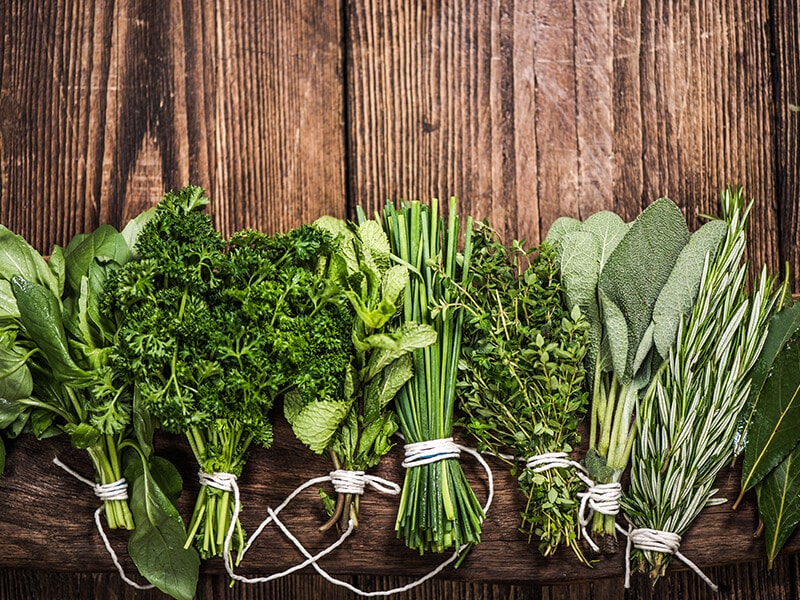
If you buy them, five days is a good rule of thumb to maximize their flavor.
If you grow your herbs, pick them before storing them tightly in the refrigerator. They will last for 2 or 3 weeks.
Some types last longer than others. Basil tends to wilt faster than the rest, while parsley and rosemary can last up to 2 weeks. However, you can use them until they dry out, turn brown, or lose their fragrance.
Dried Herbs
Dried herbs have an extended shelf life, which means they can last at room temperature for long periods. Technically, dried herbs are good for one to three years, although they can start to lose flavor after 3 months.
When you open the jar and can’t smell the aroma, it’s better to dispose of the dried herbs since they already have their potency and flavors gone.
Prices
One of the most outstanding pros of dried herbs over fresh herbs is cost savings. Their price is affordable, yet they can last far longer than their fresh counterparts.
You may use fresh herbs’ excess roots to grow extra herbs. By doing this, you can get free fresh herbs at any time. However, it may take time before you can harvest the herbs.
How To Use?
An important note is that adding fresh and dried herbs should take place at different stages of cooking.
Fresh Herbs
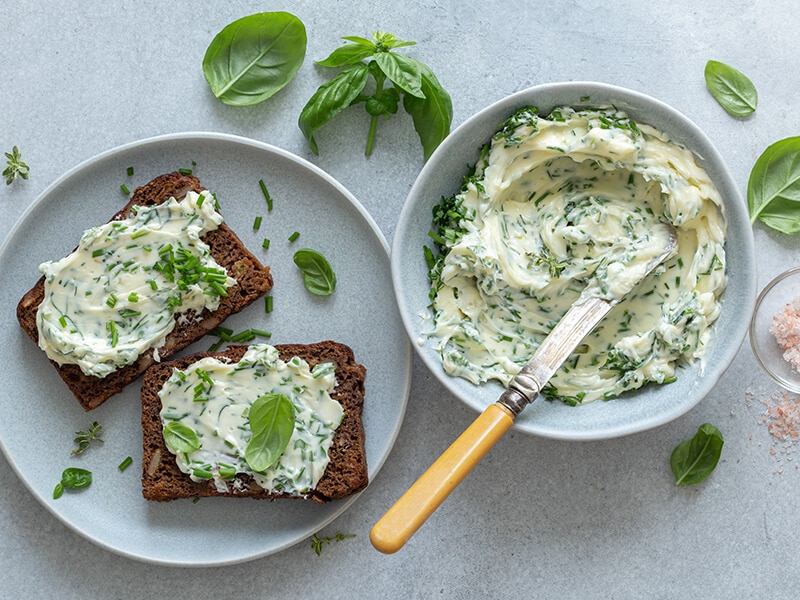
Fresh herbs are often added at the end of the cooking process, especially with dishes that require a long cooking time or before serving for garnish.
Cooking fresh herbs or exposing them to high heat will ruin the aromatic oil, resulting in the same drying outcome. They will quickly lose their flavor, or worse, they can burn and blacken.
Therefore, fresh herbs should be added at the end to maintain their freshness, vibrant color, and aroma. Sometimes, dishes benefit the most from sprinkling with fresh herbs before serving. The heat can accelerate the oil-releasing process, helping your dish to be more fragrant.
Here’s the tip:
To maximize the flavor of fresh herbs, cut them as finely as possible. The more you chop the herbs, the more oils they release, making them more aromatic.
It is best to chop such soft herbs as chives, parsley, coriander, or basil just before using, so their smell and taste are preserved.
Dried Herbs
Dried herbs work best when you add them early in the beginning or during the cooking process, as their flavor can have time to permeate the entire dish. Then, dishes will have a more consistent and richer flavor.
Here are the tips:
If you are making soup, add the herbs before it starts to boil. Normally, oil is concentrated and trapped deep inside dried herbs.
To release these aromatic oils and get the most out of the dried herbs, try rubbing them in your palms, crushing them with a mortar and pestle, or cooking them over low heat before sprinkling. As a result, the herbs will secrete more oils to enhance your meal’s flavor.
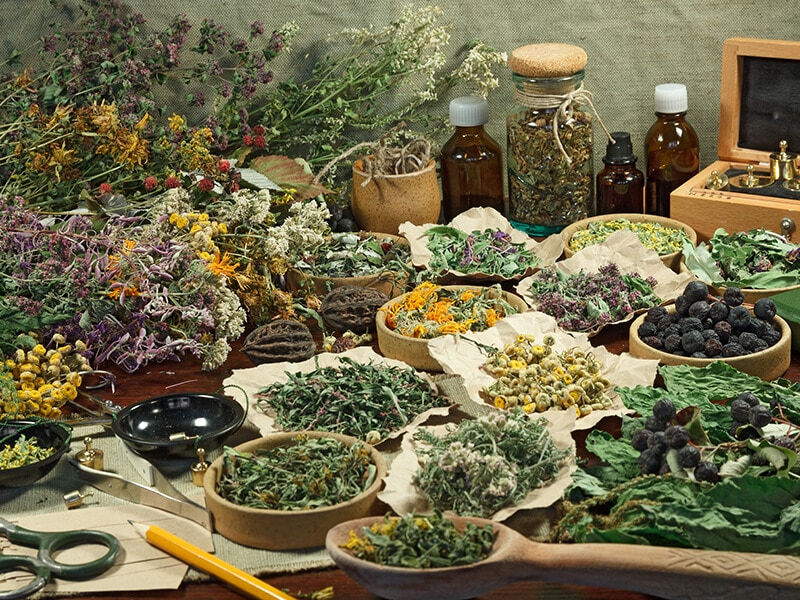
Better Used For
Along with knowing which stage to add fresh or dried herbs, it is important to understand the purpose and what to use with them. Here are a few things you should know when using fresh and dried herbs.
Fresh Herbs
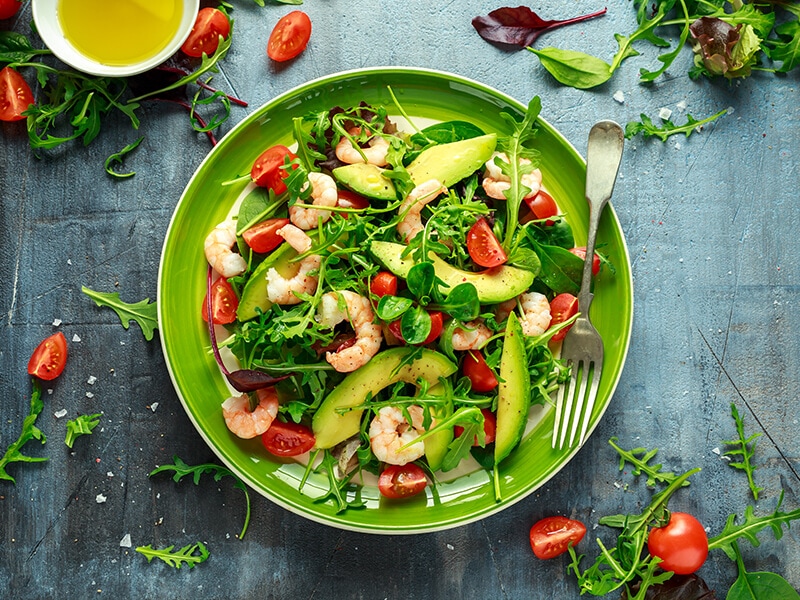
Fresh herbs are essential to garnish dishes, especially uncooked ones, as they bring brightness and vibrancy. Uncooked dried herbs tend to have a harsh and dusty taste, which cannot bring a light and refreshing feeling to a dish like fresh herbs.
Some foods go well with fresh herbs: ceviche or salad (tarragon, green goddess), pasta or pizza (fresh herbs can greatly infuse their full flavor into the flour mixture), curries, sauces (pesto, guacamole, chimichurri, other cream or herb sauces like salsa).
However, it doesn’t mean you cannot incorporate fresh herbs into hot recipes. Commonly, fresh herbs have soft and hard varieties with stronger flavors and can withstand heat better.
You can opt for hard herbs in cooked dishes and even add them during the cooking process, like dried herbs. It is the heat that will allow their flavors to blend in with the meal without getting cloying.
NOTE: Any recipe that requires a large amount of one herb should usually be fresh. It will be easier for you and your food processor.
Is basil your favorite fresh herb? Check out this video for its 5 great uses.
Dried Herbs
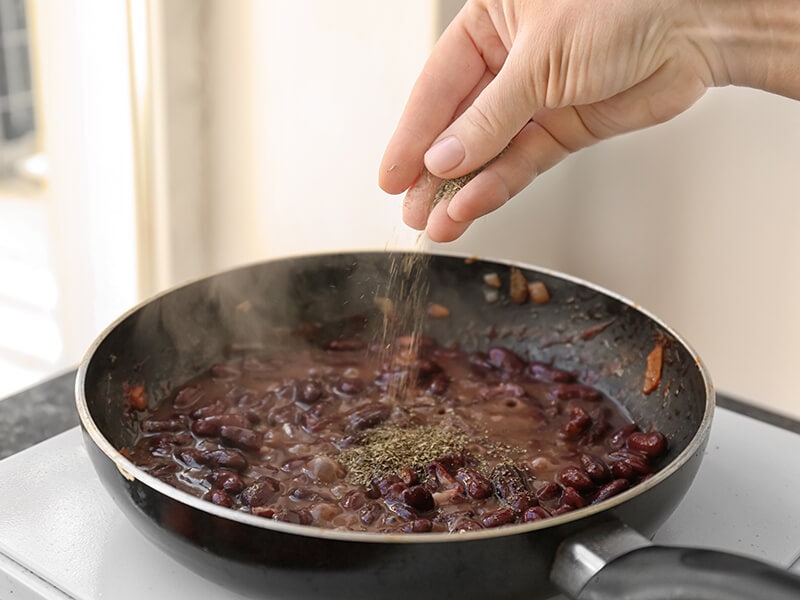
Dried herbs are the way to go if you plan to marinate, braise, or cook dishes directly on the stovetop or in the oven for a long time. Dried herbs will give off a richer flavor when exposed to heat and especially pair well with recipes that are high in liquids.
The ample amount of liquid will hydrate the herbs and release all the delicious compounds, so they can soften and soak into the dishes. Moreover, dried herbs also work better for dishes you want to freeze later.
Some foods go well with dried herbs: soups, stews, chilis, cooked sauces, a spice rub, and sweet or salt-rising pastries.
Prepare delicious Rosemary Lemon Chicken with dried rosemary, thyme, and parsley.
Which Herbs Are Better, Fresh Or Dried?
Not all herbs should be substituted, as they can limit flavor development. Some herbs are better to use in dried form to enhance the flavor, but others should not be, as they lose or distort their symbolic flavor.
Herbs That Are Better Used Fresh
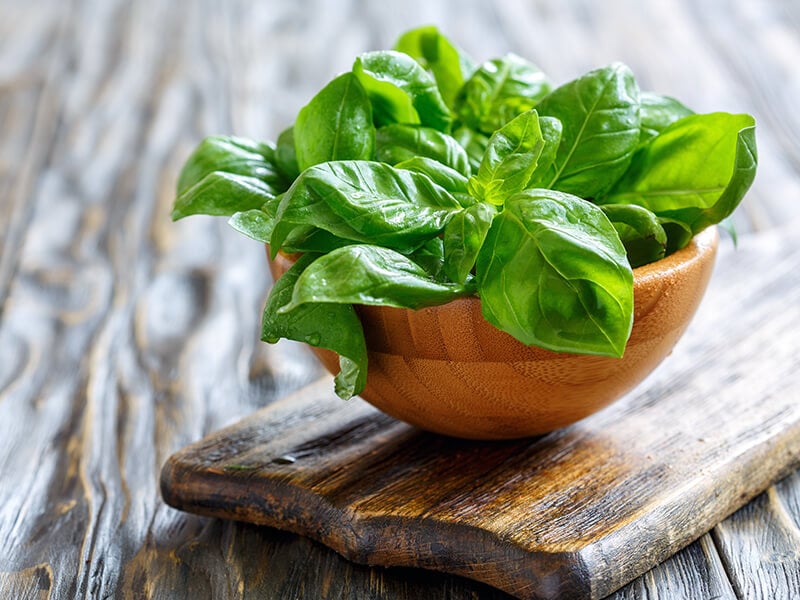
Soft, tender, and leafy herbs are perfect for using fresh. Some examples are basil, parsley, chervil (French parsley), chives, cilantro (coriander), dill, mint, tarragon, etc.
These herbs have subtle and delicate flavors with highly volatile compounds that will lose much of their potency and characteristic flavor when dried.
Herbs That Are Perfect For Drying
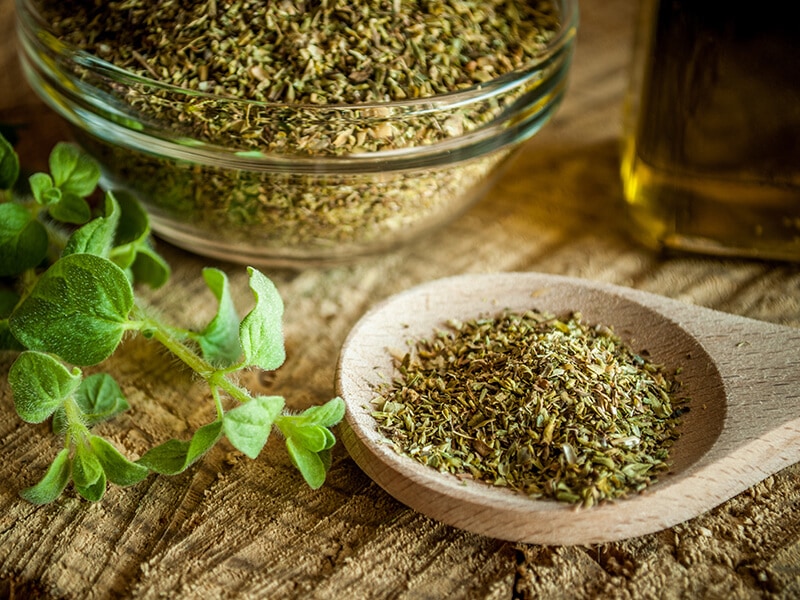
Woody herbs, like bay leaves, marjoram, oregano, fennel seeds, rosemary, thyme, savory, or sage, are perfect for drying. These herbs contain key compounds that tend not to evaporate during drying and become richer in the dehydrated state.
However, some of the above herbs are hard herbs (rosemary, thyme, sage, etc.) which are inherently strong in flavor and heat resistant. Furthermore, they can be used either fresh or dried.
Each form will give different special flavors, so depending on your intended use, they may or may not be suitable when fresh or dried.
Is It Better To Use Fresh Or Dried Herbs?
Fresh herbs are more favorable than dried ones in most recipes. Their refreshing profile is a guarantee of success. However, they are not always the best option, especially when it comes to home cooking.
As mentioned, it depends on the situation, taste, intended use, and the type of herbs you have. Home cooking often favors ingredients that can last longer and save money, so dried herbs can meet those needs excellently.
Meanwhile, fresh herbs can be costly at a certain time of the year, and it would be inconvenient for you to allow for your purchase when you only need a minuscule portion occasionally.
Besides, some dishes taste better with dried herbs, especially those with a bold palate, and some herbs also work better after dehydration.
Great Tips For Storing
When storing, fresh and dried herbs require different approaches to keep them long-lasting. In this section, you will find the best way to keep these two herb varieties last the longest.
Fresh Herbs
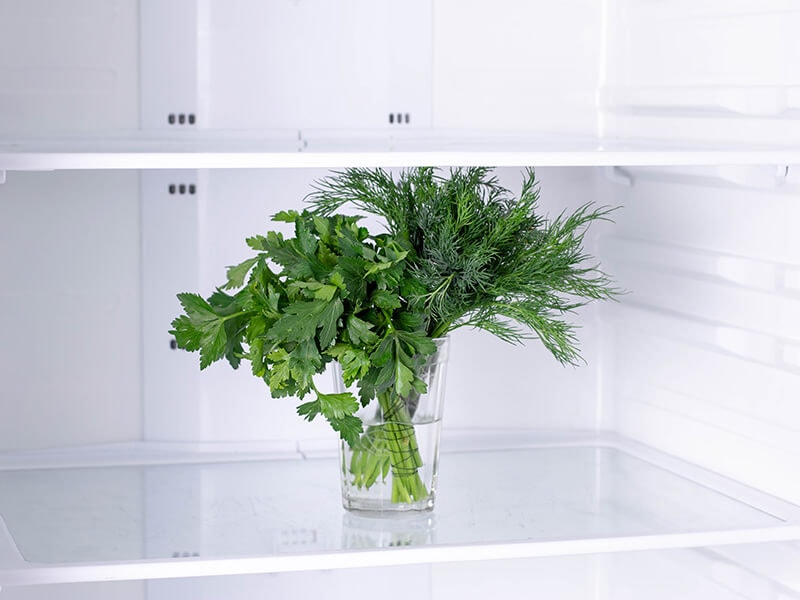
The ideal place to store fresh herbs is in the refrigerator. You can prolong fresh herbs by treating them like a bouquet of fresh flowers. You might be surprised by how long they can stay fresh by following these simple steps.
Step 1: Trim the stem ends about ¼ or less.
Step 2: Fill a glass jar, cup, or pitcher about 1 inch with water and put the stem down like flowers (make sure the leaves are not soaked in water).
Step 3: Loosely cover the fresh ends with a plastic bag and refrigerate.
Step 4: Check and change the water when necessary.
Alternatively, after snipping, you can wrap the herbs loosely in damp paper towels and store them in a resealable airtight plastic bag or container in the refrigerator’s crisper drawer.
NOTE: It is important to keep as much air out as possible. If the root begins to show bruises, you must trim off that part to keep the entire herb from ruining.
Some exceptions you should know are basil leaves because they can’t handle cold temperatures. So, follow the instructions above and simply leave it on the countertop.
In addition, thyme, rosemary, and oregano – Rinse and dry the herbs. Wrap them in paper towels and put them in a bag in the refrigerator.
Finally, keep an eye on your herbs; if they turn brown or slimy, chances are they are deteriorating and need instant disposal.
Learn how to prolong the shelf life of fresh herbs in this video.
Dried Herbs
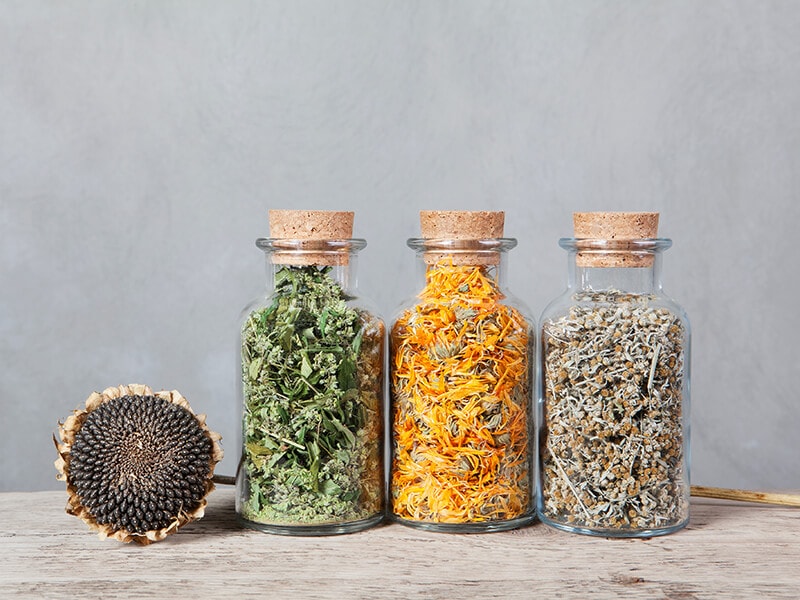
Dried herbs do not need refrigeration. Keep them in a cool, dry place, away from light, moisture, and pests.
So the ideal way to store dried herbs is in an airtight container in relatively small quantities and put them in a cabinet to avoid direct sunlight.
Aim to substitute dried herbs at least once per year (or when the color has faded, the flavor is noticeably weaker, or the smell inside the container is no longer strong).
Simple way to store dried herbs and some special attention.
Drying Your Own Fresh Herbs At Home Is Easier Than You Think!
It’s a great way to use up a wilted bunch or preserve your herbs for long use. Here are three easy ways to dry herbs: dehydrator, microwave, and air drying.
Dehydrator Drying
This is a hands-on method that requires a lot of procedures, so you should pay attention. The process is mainly about calibrating your dehydrator machine, so all you need to do is prepare the fresh herbs.
Step 1: Place the leaves on the reusable silicone mat on a wire cooling rack, in the dehydrator basket, or on an inclined baking tray.
Step 2: Spread them out in a single flat layer for little or no overlap. Once all the herbs are on the tray, place them in your dehydrator and turn the device on.
Step 3: The dehydrator should operate at around 95 – 115 °F (35 – 46 °C). However, regions with high air moisture may need to raise the temperature to 120 °F (52°C).
Step 4: Leave the herbs in for 1 to 4 hours, but you should check the herbs periodically. If they are brittle and fully dried, discard them. If they are still slightly damp, keep them and check again later.
The more fresh herbs that are dehydrated, the longer it will take to dry evenly, so keep the heat low and be patient!
NOTE: Remember to refer to the instruction manual of your dehydrator’s model in advance.
Drying herbs using a dehydrator are easy when you know all the tricks.
Microwave Drying
This is the fastest method but will take some trial and error as different herbs dry at different rates. So watch them closely and use short intervals.
Step 1: Place the sprigs of herbs on a paper towel and microwave over high heat for 30 seconds.
Step 2: From that point, use at intervals of 15-30 seconds until the herbs are crisp and completely dry. This can take anywhere from 1-10 minutes.
Check out how you can produce dried herbs in under 2 minutes.
Air Drying
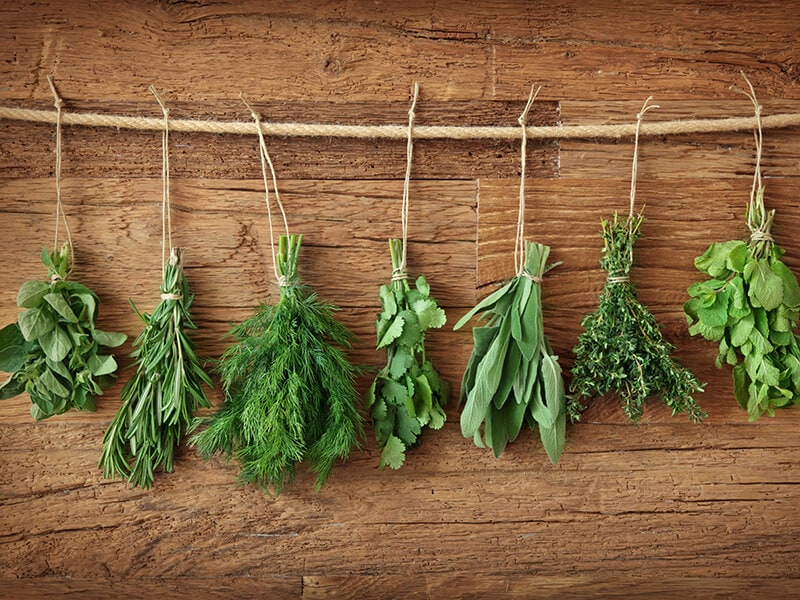
This traditional method can be the most hands-off way of drying herbs. Here’s how you can get dried herbs using the natural element.
Step 1: Gather a bunch of herb stalks and tie them together with some string or twine, leaving enough rope to hang the herbs. Do this with the rest until they are all tied in bundles.
Step 2: Hanging the tied herb bundles upside down in a well-ventilated place to dry on a doorway or cupboard is perfect.
Step 3: Depending on some natural factors, it can take several days to dry completely (5 – 10 days). Keep checking until they are ready to pack. The leaves should be thin and crispy.
However, this method is not recommended if the air where you live has high humidity. Herbs can be quickly oxidized and end up being moldy clumps. (2)
NOTE: Regardless of the method, fresh herbs should be rinsed and drained of excess water in the first place.
Take a look at how you can easily air-dry herbs at home.
FAQs
Here are some related questions and notes you should know as well. Make sure you don’t miss them out.
Fresh And Dried Herbs, Which One Is Your Top Pick?
Now that you’re equipped with a better understanding of the discrepancies between fresh and dried herbs with relevant knowledge about them, I hope that you’re inspired to get into the kitchen and add this incredible ingredient to your recipe.
Whether you choose fresh or dried herbs or even a combination of the two, I believe your meal will taste wholesome, and everyone will be amazed when they try it.
So, give it a try, and don’t forget to spread this valuable knowledge to those around you. It is more fun to have someone to share the joy of cooking with, isn’t it?
Paragraph
- Sarah Rautio, M.S.U.E. (2022) Increase intake of fresh herbs for everyday health, MSU Extension.
- Akpo-Djènontin, D.O.O. et al. (2018) Mold infestation and aflatoxins production in traditionally processed spices and aromatic herbs powder mostly used in West Africa, Food science & nutrition. U.S. National Library of Medicine.

